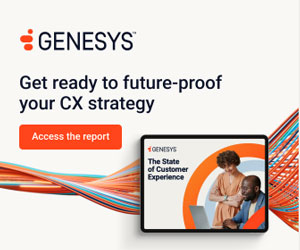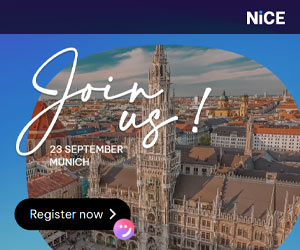Larry Ekiert of Enghouse Interactive discusses how to empower customers with improved self-service options.
For many businesses, self-service is evolving into becoming a key factor for success. But innovative and success-seeking organizations strive to be the exception – they seek to go further, faster. They succeed by developing better experiences at every organizational touchpoint they can: for their customers, partners, suppliers and vendors.
Looking at the customer journey, it usually starts on a bad note. The customer is calling due to an issue, a problem, or a need for something, all the while thinking that they would rather be doing something else.
As such, the onus is on the organization to make the process as pleasant and a positive one as possible.
Choices Expected. Choices Offered.
Customers now also expect to have choices . And those choices usually differ depending on demographics . Older customers generally skew to using voice-based services, while younger customers readily use automation.
The types of products and services your organization offers also influences the choices customer make to engage with your organization.
Consumers of higher-end products are more hands-on and want the most comprehensive automated tools possible, while consumers of mid-range to lower-end products generally prefer voice-based services for support.
The exception to this rule is when dealing with personal highly sensitive situations, where generally all callers prefer human interaction for their empathy, ongoing reassurance and confirmations that are regularly part of such calls.
With the growing use of smart devices and tablets, customers, regardless of their demographic profile, will generally shift to automated tools for more support services, no matter their age.
Into the Vortex
Looking at the customer journey holistically, the customer’s first point of contact is the most important.
That includes what information you provide to your customers. Your website and customer support assets should be treated as your first touchpoint, it’s where you make your first impression. It defines your organization. Customers expect to be able to find the information they need to answer their product/service questions there.
Your FAQ documentation should be as detailed as needed to help customers resolve their issue without needing to contact you. If it isn’t complete, then they’ll reach out for support.
If by voice, the greeting and all messaging including prompts should be clear, concise, consistent and professional throughout the customer journey. This is where the positive experience starts. Proper messaging is invaluable in shortening the self-service journey.
Optimizing choices, defining them clearly, ensuring all possible requirements are met with a minimal number of prompts and choices, are the hallmarks of a detailed understanding of your services/products and how your customers use them.
And yet, customers are digital, increasingly, customers are also choosing to use digital channels, either as a complement to voice or as their sole ‘go to’ communications option – and even sometimes use them all simultaneously!
This cross-channel approach has also affected their self-service expectations – if using a cross-channel approach, customers expect that they will be dealt with even faster as one of the channels they are using should be responded to immediately.
Expectations are on the rise, maybe even unreasonably so.
Voice? Digital? Cross-Channel?
As an initial starting point, once a customer has chosen their preferred communications channel the organization should be capable of shifting the support dialogue from one channel to another, as the customer chooses. And without needing to re-authenticate or provide a status of what they have already gone through to resolve their issue.
A proper CRM integration will ensure that the customer’s file is updated in real-time, which ensures that the transactional history is readily available if any other channel is also used or if the call is escalated to a live agent.
By leveraging web-chat, SMS, social media or video, customers can determine what is best for them at any moment in time, for whatever reason they choose.
To force them to choose one singular approach will not be acceptable, and over time, they will ultimately choose to engage with organizations that provide the flexibility they expect.
Engage and authenticate with technology, as part of the customer journey, preferred customers should be authenticated automatically and with no additional customer involvement.
Passive biometrics (using voiceprints, tone, and speaking cadence or keystroke patterns) is the best possible approach for the majority of uses, outside of financial services – which will want to use two-factor authentication to limit their liability.
New customers should also be given the choice of how they want to be authenticated – clearly and specifically at the beginning of the new customer registration process.
The days of asking questions or just requesting passwords are rapidly fading.
Help make sure your organization delivers the service experience that exceeds customer expectations. Doing so can transform your contact centre from a cost-centre into a revenue generator.
This blog post has been re-published by kind permission of Enghouse Interactive – View the Original Article
For more information about Enghouse Interactive - visit the Enghouse Interactive Website
Call Centre Helper is not responsible for the content of these guest blog posts. The opinions expressed in this article are those of the author, and do not necessarily reflect those of Call Centre Helper.
Author: Enghouse Interactive
Published On: 27th Aug 2020 - Last modified: 2nd Sep 2020
Read more about - Guest Blogs, Enghouse Interactive






 Enghouse Interactive delivers technology and expertise to help bring your customers closer to your business through its wide range of customer contact solutions.
Enghouse Interactive delivers technology and expertise to help bring your customers closer to your business through its wide range of customer contact solutions. 





























